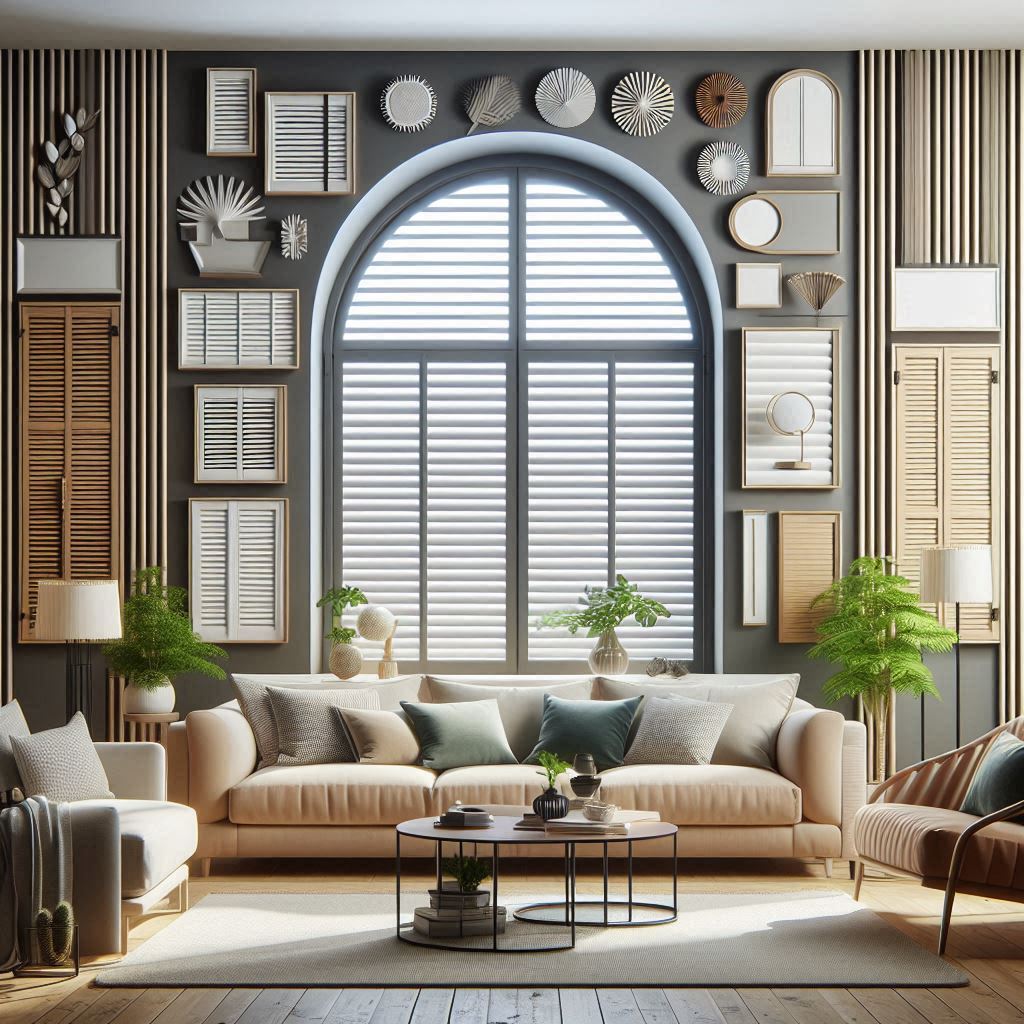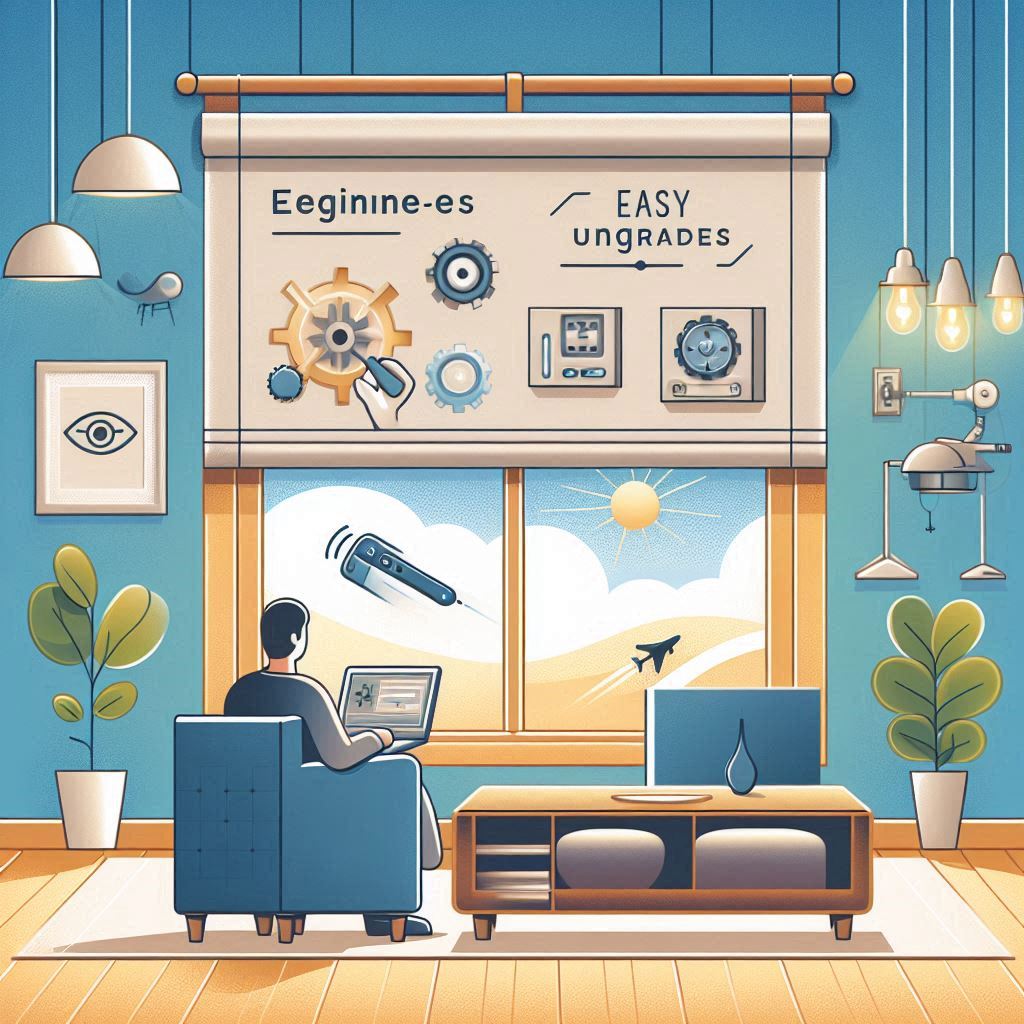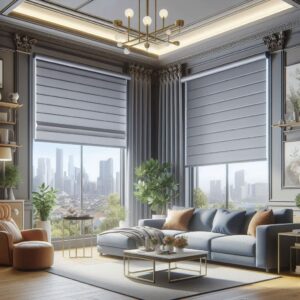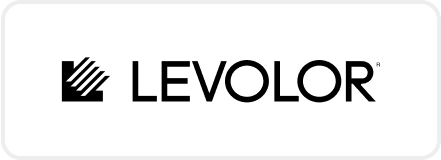Ever wondered how to cut down on your energy bills while keeping your home cool and comfortable? Solar screens might be your answer. As more homeowners look for smart ways to save energy, solar screens are becoming a popular choice.
These screens block out the sun’s harsh rays, reducing heat and glare inside your home. They help keep your space cooler, which means less strain on your air conditioner and lower energy costs. Plus, they add an extra layer of privacy without sacrificing your view.
In this guide, you’ll learn everything about solar screens—from their benefits and how they work to choosing the right type for your home. Ready to transform your living space and start saving money? Let’s dive in.

What Are Solar Screens?
Solar screens are a smart addition to any home wanting to keep cool and save on energy bills. But what exactly are they, and how do they work?
How Do Solar Screens Work?
Solar screens are made from special materials designed to block and reflect the sun’s rays. They typically use woven polyester or fiberglass coated with a protective layer. This setup effectively reduces heat and glare from entering your home. By blocking a significant portion of the sun’s energy, they help maintain a cooler indoor temperature. This means your air conditioner doesn’t have to work as hard, leading to lower energy costs.
Materials Used in Solar Screens
Let’s break down what makes up a solar screen:
- Polyester or Fiberglass Mesh: These materials are strong and durable. The mesh is tightly woven but allows air and light to pass through.
- Protective Coating: This layer increases the screen’s ability to reflect sunlight and resist damage from the elements.
Structure of Solar Screens
The structure of a solar screen may seem simple, but it’s quite effective:
- Frame: The screen is usually mounted on a sturdy frame, often made of aluminum or another lightweight metal.
- Mesh: The heart of the solar screen, the mesh, is stretched tightly across the frame.
- Mounting Options: Solar screens can be installed externally on windows, doors, or other openings. Some are fixed, while others can be rolled up when not in use.
Benefits of Solar Screens
Why should you consider adding solar screens to your home? Here are some key benefits:
- Energy Savings: By reducing the heat entering your home, you’ll spend less on air conditioning.
- Comfort: Solar screens help maintain a cooler indoor environment.
- Privacy: While you still get a good view outside, solar screens reduce visibility from the outside looking in.
- Sun Protection: They protect your furniture, flooring, and curtains from fading due to UV exposure.
Common Questions About Solar Screens
- Do they block all sunlight? No, they block a significant portion but still allow some natural light to filter through.
- Are they easy to clean? Yes, you can clean them with mild soap and water.
- Do they work only in hot climates? No, they are beneficial in any climate by improving energy efficiency.
By understanding what solar screens are and how they function, you can decide if they are a good fit for your home. Ready to protect your home and start saving energy?
Benefits of Solar Screens
Solar screens are more than just a trendy home addition. They provide numerous practical benefits that can help improve your home and save you money. Let’s explore some of the standout advantages of installing solar screens.
Energy Savings
One of the biggest perks of solar screens is their ability to reduce energy consumption. By blocking a large portion of the sun’s heat, these screens can significantly lower the indoor temperature. This means your air conditioner doesn’t have to work as hard, leading to lower utility bills. Imagine cutting your summer energy bill by 20-30%. Solar screens make it possible.
Here are a few ways solar screens help with energy savings:
- Reduce cooling costs: By keeping your home cooler, you’ll use less energy for air conditioning.
- Prevent heat gain: They block out a significant amount of solar energy, reducing the need for artificial cooling.
- Year-round efficiency: They work in all seasons by retaining heat during winter and blocking heat in the summer.
Protection from UV Rays
Another crucial benefit is the protection they offer from harmful UV rays. Solar screens block up to 90% of UV radiation, which can be destructive over time. UV rays can cause your furniture, flooring, and other interiors to fade and deteriorate. Installing solar screens helps in preserving the beauty and longevity of your home’s interiors.
Consider the following advantages:
- Furniture protection: Your couches, tables, and other furniture pieces stay new and vibrant longer.
- Flooring safety: Whether you have hardwood, carpet, or tile, solar screens keep floors from getting damaged by the sun.
- Health benefits: Less UV exposure reduces the risk of skin-related issues for you and your family.
Enhanced Privacy
One of the lesser-known benefits of solar screens is the privacy they offer. These screens allow you to see outside without letting outsiders peek in. It’s like having a one-way mirror on your windows. This feature is particularly useful for homes in busy neighborhoods or near the street.
Think about these points:
- Discretion: Keeps prying eyes out while maintaining your view.
- Natural light: Unlike heavy curtains or blinds, solar screens let in natural light without compromising your privacy.
- Stylish look: They add a sleek, modern touch to your home without obstructing your view.
Improved Comfort
Solar screens contribute to a more comfortable living space. By controlling the amount of heat and glare that enters your home, they help create a more pleasant indoor environment. You’ll notice less glare on your TV or computer screens, making it easier to enjoy your favorite shows or work from home.
Here are some comfort enhancements:
- Reduced glare: Makes it easier to see screens and read without straining your eyes.
- Temperature regulation: Keeps rooms at a more consistent, comfortable temperature, reducing hot spots.
- Peaceful atmosphere: The diffusion of sunlight can create a calmer, more inviting space.
By now, you should see how solar screens can make a huge difference in your home. From saving on energy bills to protecting your interiors and enhancing privacy, these screens are a smart investment.

Types of Solar Screens
When it comes to solar screens, there’s no one-size-fits-all solution. Each type of solar screen offers different benefits. Depending on your needs, you can choose from fixed, retractable, or custom solar screens. Let’s explore the types in detail.
Fixed Solar Screens
Fixed solar screens are permanently mounted on your windows or doors. They’re a popular choice for those seeking long-term energy savings and sun protection.
Characteristics:
- Permanent Installation: Once installed, these screens stay put. You don’t need to adjust them.
- Durability: Made with strong materials like aluminum frames and high-quality mesh.
- Maintenance: Fixed screens require minimal upkeep. Just a good cleaning now and then.
Benefits:
- Consistent Protection: Always block the sun’s rays, reducing heat and glare throughout the day.
- Cost-Effective: Often cheaper than other types. Great for those on a budget.
- Privacy: Provides year-round privacy while still allowing you to see outside.
Retractable Solar Screens
Retractable solar screens offer flexibility. You can roll them up or down as needed, giving you control over how much sun you let in.
Features:
- Flexibility: Easily retract when you don’t need them, allowing full sunlight when desired.
- Motorized or Manual: Available in both motorized versions for ease of use and manual versions for a more budget-friendly option.
- Versatility: Suitable for windows, patios, and outdoor spaces.
Advantages:
- Convenience: Control with the touch of a button (motorized). Perfect for those who like having options.
- Extended Lifespan: Retracting when not in use can extend the life of the screens.
- Aesthetic Appeal: Offers a sleek and modern look, enhancing the visual appeal of your home.
Custom Solar Screens
Custom solar screens are the ultimate in personalization. Tailored to fit your specific needs and preferences, they offer unique benefits.
Description:
- Tailored Fit: Made to match the exact dimensions and style of your windows or doors.
- Variety of Options: Choose from different colors, materials, and frame types to suit your home’s decor.
- Special Features: Incorporate additional features like enhanced UV protection or extra privacy layers.
Tailored Benefits:
- Perfect Match: Ensures a seamless look, matching your home’s aesthetics perfectly.
- Enhanced Performance: Customization allows for optimization in sun and heat blocking efficiency.
- Unique Needs: Address specific requirements, like extra sun protection for a particular room or unique window shapes.
Choosing the right type of solar screen depends on your lifestyle and home needs. Whether you want the permanence of fixed screens, the flexibility of retractable screens, or the tailored benefits of custom screens, each type offers a smart way to protect your home and save energy.
Installation Process
Installing solar screens can be a straightforward DIY project or a task best handled by professionals, depending on your comfort level and experience. Let’s explore the different approaches to installing solar screens.
DIY Installation
For those who love tackling home projects, DIY installation of solar screens can be both satisfying and cost-effective. Here’s a simple step-by-step guide to help you through the process.
Materials Needed:
- Solar screen fabric
- Screen frame kit
- Utility knife
- Screen spline and roller
- Measuring tape
- Hacksaw or miter saw
- Screws and drill
Step-by-Step Process:
- Measure Your Windows: Start by measuring the width and height of the window opening. Accuracy is key to ensure a good fit.
- Cut the Frame Parts: Using your measurements, cut the frame pieces to size with a hacksaw or miter saw. Most screen frame kits include corner connectors to assemble the frame.
- Assemble the Frame: Connect the frame pieces using the corner connectors. Ensure the frame is square by checking diagonally from corner to corner.
- Cut the Screen Fabric: Lay the solar screen fabric on a flat surface and cut it to size, leaving an extra inch on all sides to attach it to the frame.
- Attach the Screen to the Frame: Place the screen fabric over the frame. Use a screen spline and roller to press the spline into the grooved channel of the frame, securing the fabric. Trim any excess fabric with a utility knife.
- Install the Screen: Position the completed screen over your window. Secure the frame using screws and a drill, making sure it fits snugly without gaps.
Tips:
- Work Slowly: Rushing can lead to mistakes. Take your time to ensure precise cuts and a tight fit.
- Double-Check Measurements: An extra check can prevent wasted materials and rework.
- Safety First: Wear gloves and eye protection when cutting materials to avoid injury.
Professional Installation
If DIY isn’t your thing, or if you want a guaranteed flawless fit, hiring professionals for the installation might be your best bet. Here’s why opting for professional installation has its advantages.
Benefits of Professional Installation:
- Expertise: Professionals bring years of experience, ensuring that the installation is done correctly and efficiently.
- Time-Saving: Hiring experts means the job gets done quickly, allowing you to focus on other tasks.
- Precision: Pros have the right tools and skills to ensure a perfect fit, which can be challenging to achieve with DIY.
- Warranty: Many professional installers offer warranties on their work, providing peace of mind and protection against future issues.
What to Expect:
- Consultation: A professional installer will usually start with a consultation to measure your windows and provide a quote.
- Scheduling: Once you agree on the details, you’ll schedule an installation date. Most installations are completed within a few hours.
- Installation: On the day of installation, professionals handle all the heavy lifting, from cutting the screens to securing them in place.
- Cleanup: They also take care of any mess, leaving your home as clean as they found it.
In the end, whether you choose to go the DIY route or hire a professional, getting solar screens installed will help protect your home and save energy. Each method has its own set of benefits, so choose the one that best fits your needs and capabilities.
Maintenance and Care
Solar screens are a fantastic addition to your home, offering energy savings, UV protection, and enhanced privacy. However, to keep them effective and looking their best, they do require some maintenance and care. Here’s a simple guide to help you out.
Routine Cleaning
Regular cleaning helps maintain the appearance and efficiency of your solar screens. Dust, dirt, and debris can accumulate over time, reducing their effectiveness.
- Gather Your Supplies:
- Soft brush or broom
- Mild soap
- Bucket of water
- Soft cloth or sponge
- Remove Loose Debris: Start by gently brushing or sweeping off any loose dirt and dust from the screens. This prevents scratching during the washing process.
- Prepare Soapy Water: Mix a few drops of mild soap in a bucket of lukewarm water. Avoid harsh chemicals that can damage the screen material.
- Wash the Screens: Dip the soft cloth or sponge in the soapy water and gently scrub the screens. Work in sections to ensure thorough cleaning. Don’t apply too much pressure to avoid stretching or tearing the fabric.
- Rinse Thoroughly: Use a hose with a gentle spray setting to rinse off the soap and grime. Make sure all soap residue is removed to prevent streaking.
- Allow to Dry: Let the screens air dry completely before reattaching them. This helps prevent mold or mildew growth.
Pro Tip: Clean your solar screens at least twice a year, or more if you live in a dusty area.
Repair and Replacement
Even with the best care, solar screens can get damaged over time. Understanding when and how to repair or replace them is crucial.
Signs of Damage:
- Tears or Holes: Small tears or holes can expand, reducing the screen’s effectiveness.
- Loose Frames: Frames that don’t fit snugly can allow insects and debris to enter your home.
- Faded Material: UV exposure can cause the screen material to lose its color and effectiveness.
Repair Tips:
- Small Holes and Tears: Use a screen repair kit available at most hardware stores. These kits include patches and adhesive that can easily fix minor damages.
- Loose Frames: Tighten any loose screws or replace missing ones. If the frame is bent or warped, it may require professional adjustment.
- Reattaching Screens: If the screen has come loose from the frame, use a spline tool to press a new spline into the frame’s groove, securing the screen fabric.
Replacement Guidelines:
- Extent of Damage: If more than 20% of the screen is damaged, consider replacing it. Frequent small repairs can add up and become less cost-effective.
- Age of Screens: Solar screens typically last 10-15 years. If yours are older, replacement might be more efficient than continual repairs.
- Professional Help: For large or complex solar screens, it might be best to hire a professional for replacement. They ensure a perfect fit and optimal performance.
Regular maintenance and timely repairs will keep your solar screens in top shape. This not only prolongs their life but also ensures that they continue providing energy savings and protection for your home.
Cost Analysis
Understanding the costs involved in installing solar screens can help you make an informed decision. Let’s break it down into initial investment and long-term savings.
Initial Investment
When planning to install solar screens, the first thing to consider is the initial cost. This includes both the materials and the installation fees. Here’s a closer look at what you can expect.
Material Costs:
- Solar Screen Fabric: The fabric itself is usually priced per square foot. Expect to pay around $0.50 to $1.50 per square foot depending on the quality and brand.
- Frames and Mounting Hardware: Frames, splines, and other necessary hardware can add about $1 to $2 per square foot.
- Special Features: If you’re opting for additional features like motorized retractable screens, be prepared for higher costs. Motorized options can range from $200 to $500 per unit.
Installation Costs:
- DIY Installation: If you choose to install the screens yourself, you save on labor costs. However, you will need some tools and materials, which can cost around $50 to $100 if you don’t already have them.
- Professional Installation: For professional installation, labor costs typically range from $25 to $50 per hour. The total cost depends on the number of screens and the complexity of the installation. For an average-sized home, professional installation can cost between $300 and $600.
Total Initial Cost Estimates:
- DIY Installation: $250 to $400
- Professional Installation: $500 to $1,200
Long-term Savings
While the initial costs might seem significant, the long-term benefits definitely make it worthwhile. Solar screens can lead to substantial energy savings and even increase the value of your home.
Energy Savings:
- Reduced Cooling Costs: Solar screens can cut down your air conditioning needs by up to 30%. For a typical household, this can translate to savings of $50 to $150 per month during hot months.
- Year-Round Efficiency: Solar screens aren’t just for summer. They can help retain heat during winter, further reducing energy costs.
Increased Home Value:
- Enhanced Curb Appeal: Homes with solar screens often look more modern and well-maintained. This can increase your home’s appeal to potential buyers.
- Energy-Efficient Home: In today’s market, energy efficiency is a big selling point. Homes with solar screens can command higher prices, potentially adding $1,000 to $2,000 to the value of your home.
Return on Investment (ROI):
- Short-Term Payback: If your monthly energy savings are around $75, you could recoup your initial investment in just over a year.
- Long-Term Gains: Over the span of 10 years, the energy savings alone can amount to $9,000, not to mention the added home value.
In summary, while solar screens do require an initial investment, the long-term financial benefits are substantial. Not only do they help you save on energy costs, but they also contribute to increasing your home’s value. When viewed this way, solar screens are indeed a wise investment for any homeowner.
Choosing the Right Solar Screens for Your Home
When selecting solar screens, it’s essential to consider a few key factors that can impact their effectiveness and overall look. Let’s go over how climate, aesthetics, and functionality needs influence your choice.
Climate Considerations
The climate you live in plays a significant role in picking the right solar screens. Different climates demand different types of screens to maximize benefits.
- Hot and Sunny Climates: In areas with intense heat and sunlight, opt for screens with a high shading coefficient. These screens block more sunlight, reducing the heat entering your home. Look for materials that can withstand high temperatures without deteriorating.
- Cold Climates: Even in colder areas, solar screens are useful by reducing glare while allowing enough sunlight to keep interiors warm. Choose screens that can help insulate your home by trapping heat inside during winter.
- Variable Climates: For places with varying temperatures and weather conditions, consider adjustable or retractable screens. These allow you to control the amount of sunlight and heat entering your home, adapting to the changing weather.
Aesthetic Preferences
Your home’s appearance is important. Solar screens come in various designs, colors, and styles to match your aesthetic needs.
- Color and Material: Darker screens tend to block more light and offer better privacy, but they can also darken your interiors. Lighter screens let in more light while still reducing glare. Choose materials that complement your windows and overall home design.
- Frame Styles: The frames of solar screens come in different finishes, such as aluminum or wood, allowing you to match your home’s exterior. Think about the architecture of your home when selecting frame styles.
- Customization Options: Some manufacturers offer custom designs, allowing you to tailor the screens to specific shapes and sizes of your windows. This can enhance the look of your home’s exterior.
Functionality Needs
Different households have different needs for solar screens. Consider what you want to achieve with your screens beyond just energy savings.
- Privacy: If you live in a busy neighborhood or have windows facing the street, choose solar screens that offer enhanced privacy. These screens obscure the view from the outside while maintaining visibility from the inside.
- Light Control: For rooms that need different levels of light throughout the day, adjustable solar screens are perfect. You can control the amount of light entering the room, reducing glare when needed.
- Durability: If you have pets or children, look for screens made from durable materials that can withstand wear and tear. Some screens are even pet-resistant, ensuring they last longer without damage.
- Ease of Use: Consider how easily the screens can be opened or closed if you need to access the windows frequently. Retractable or roll-up screens offer convenience for windows that you need to access often.
By considering these aspects—climate, aesthetic preferences, and functionality needs—you can choose the best solar screens for your home. Solar screens aren’t just a practical addition; they can also enhance the look and comfort of your living space.

Conclusion
Solar screens are a smart, practical way to protect your home and save on energy costs. They block sunlight, reduce heat, and offer privacy without sacrificing your view. With options like fixed, retractable, and custom screens, there’s a solution for every home.
Choosing the right solar screens depends on your climate, aesthetic preferences, and functionality needs. Whether aiming for lower energy bills, UV protection, or enhanced privacy, solar screens deliver.
Invest in solar screens today to make your home more comfortable and energy-efficient. Your wallet and home will thank you.














